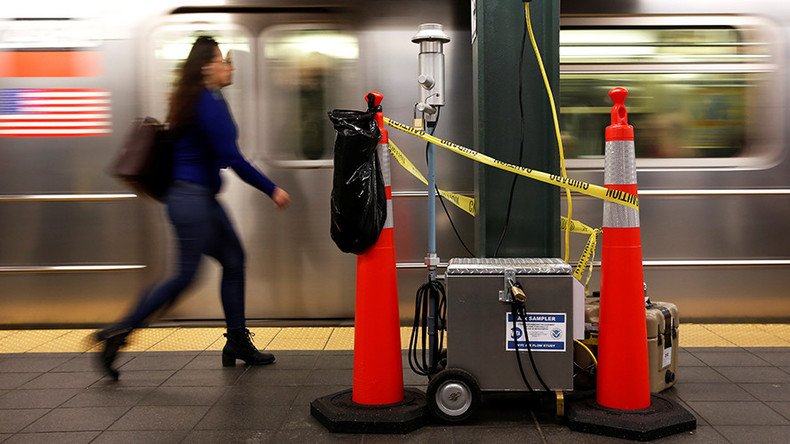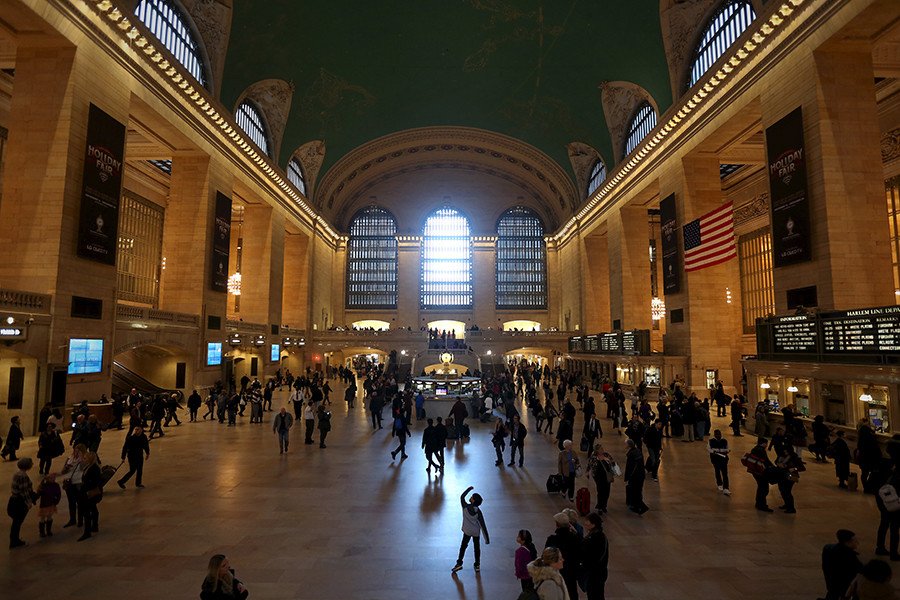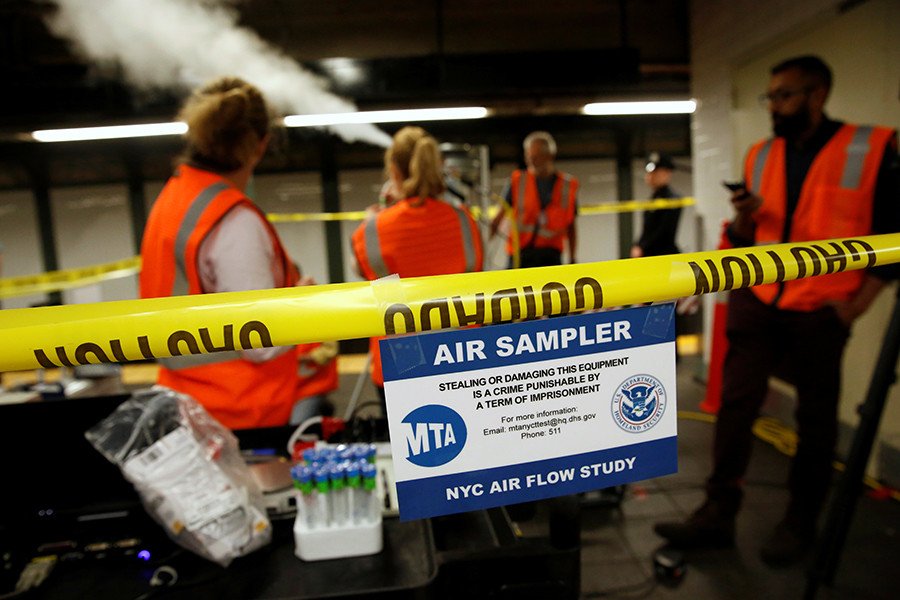US carries out bioterror experiment using ‘non-toxic’ gas on NYC subway

The US government is examining how a poisonous chemical attack might impact the New York subway system by releasing “non-toxic” particles and gas into train stations during operating hours.
Since Monday, the US Department of Homeland Security (DHS) has by its own admission been releasing bursts of “inert” and “harmless” gases into one of the busiest transport networks in the world.
It is part of a detailed study to replicate what might happen if terrorists ever unleashed chemicals like sarin or chlorine gas into the metro.
For at least five days, two out of three stations including Grand Central, Times Square and Penn Station are being “gassed” as commuters go about their business.
The experiment is aimed at observing airflow patterns and improving bioterrorism security within the sprawling NYC tunnel network.
Subway ‘attractive’ target
The DHS has already moved to allay commuter fears regarding the “no public risk” test, telling people to expect experimenters in “regular clothes, safety vests and badges” at a number of stations.
It comes after researchers at the DHS described the subway as an “attractive target for terrorists” due to “low physical security” and the rapid way contaminants can be transferred between passengers.

“This study is part of the Department’s ongoing commitment to preparedness and the shared responsibility of protecting the nation’s critical infrastructure,” DHS spokesperson Dr. Donald Bansleben said in a statement.
“The results of this study will provide us with a greater understanding of airflow characteristics, informing the research and development of next generation systems that continue to ensure the safety and security of the general public.”
Electronic sampling units will monitor the air at around 55 stations across Manhattan, many of them located near subway vents.
Bio-terrorism response experiment in NY subway this week. Here's a Homeland Security map of the 'non-toxic' gas test pic.twitter.com/t4fhdI1DWZ
— Luke Holohan (@Lukeholohan) May 9, 2016
‘Cake sweetener’ gas test
An environmental assessment carried out in April provides an insight into the types of materials which government security chiefs have decided to expose people to.
The report recommends the aerosol release of DNATrax-OB and/or DNATrax-Silica-OB - two vapors selected to carry either maltodextrin particles or amorphous silica.
Maltodextrin is used in artificial sweeteners and cake mixes, but can cause allergic reactions.
One non-toxic chemical recommended to be used in the NY subway gas testing called Maltodextrin - used in cake mixes. pic.twitter.com/rxHhReWtoa
— Luke Holohan (@Lukeholohan) May 9, 2016
Meanwhile, the small silica particles, used to stop lumps forming in powdered foodstuffs, have been given the green light despite some passengers possibly having respiratory problems. However, the DHS assured that the level of exposure will be below the safety thresholds set by the US Occupational Safety & Health Administration. “... The maximum amount of particulate tracer material released within a station over ten minutes, 8 hours, and 24 hours is 20, 20, and 40 grams, respectively.
“...The material will be directed into the airspace to be rapidly mixed into the station, minimizing exposure of any one individual to tracer materials.”

The people most likely to be exposed to the test are working age adults, given a New York Metro Transportation Council survey identified 25-54 year olds as the predominant users of the subway.
“There is no evidence that low income or minority populations would receive a higher exposure to the particulate or gas material than any other group,” the DHS environmental report stated.












